#Alcazar Garden
Explore tagged Tumblr posts
Text

My photography @sherrylephotography 5/23
Alcazar, Seville Spain
#original photography on tumblr#spain#garden#vacation spain#my vacation#travel#my photography#sherrylephotography#gimp#alcazar
129 notes
·
View notes
Text

Fountain in the gardens of the Real Alcazar of Seville, SPAIN
#fountain#fuente#gardens#jardines#real alcazar#royal alcazar#seville#sevilla#spain#españa#europe#europa
117 notes
·
View notes
Text

#phoneography#mobiele telefoon fotografie#mobile phone photography#smartphoneography#smartphone fotografie#smartphone photography#reisfotografie#travel photography#reizen#travel#reisen#voyage#viajar#Spain#Spanje#España#Espagne#Spanien#Sevilla#Seville#andalucía#andalucia#real alcazar#palace#paleis#Europe#Europa#garden#tuin#vscocam
4 notes
·
View notes
Text

Ok i REALLY like how this random google pixel shot turned out, but insta won't even show my posts to my own friends, and I really wish someone would appreciate it with me, together 🥹 idk if anyone on tumblr will see it tho, capitalism has destroyed everything, man..
#photography#google pixel#google pixel photography#statue#art#seville#sevilla#spain#andalucia#andalusia#real alcazar de seville#gardens#neptune#neptune statue#travelling#travel photography#throwback#european beauty#personal#oc
5 notes
·
View notes
Text

The lovely garden of the Alcázar of Seville, Spain.
Explore:
#seville#garden#formal garden#spain#españa#sevilla#garden photography#alcazar#alcazar of seville#travel#architecture#landscape#original photography#photographers on tumblr#urbanexploration#wandering#palace#photography#lensblr#wanderingjana
11 notes
·
View notes
Text

Today's Flickr photo with the most hits: this tapestry in the Real Alcazar, Seville.
1 note
·
View note
Photo
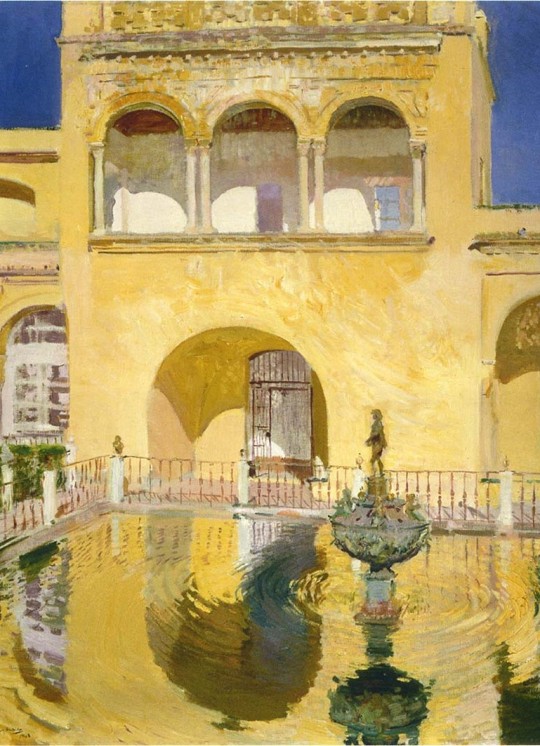
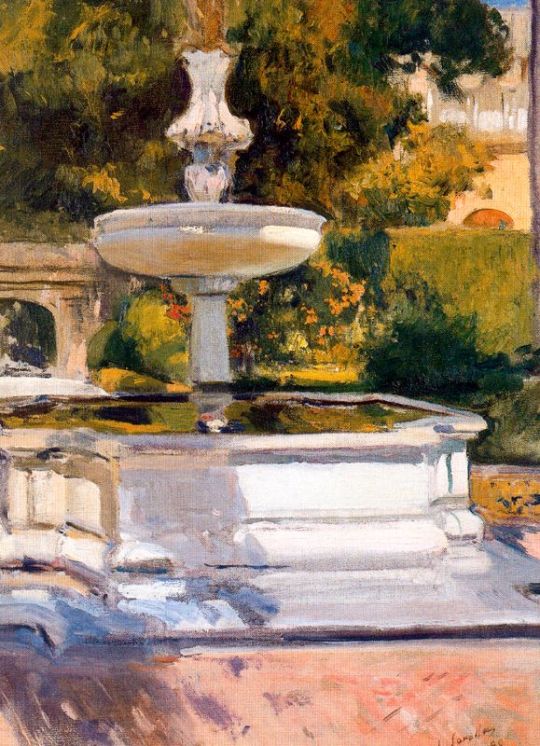
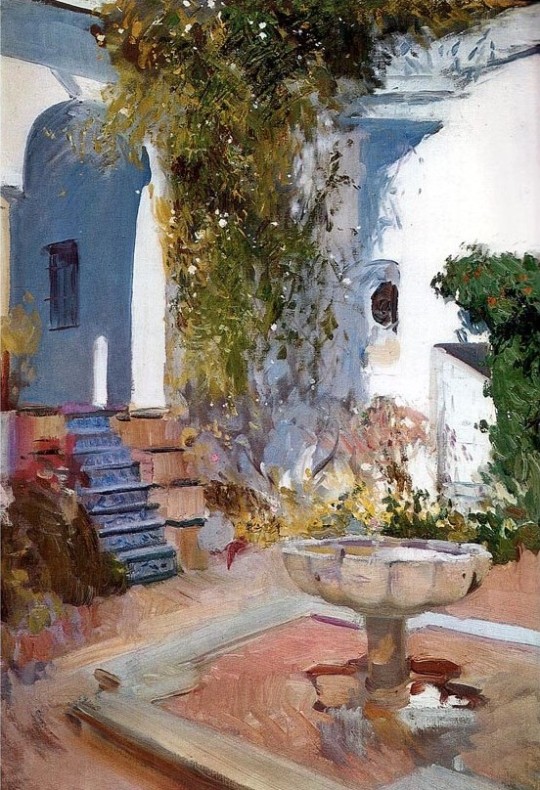
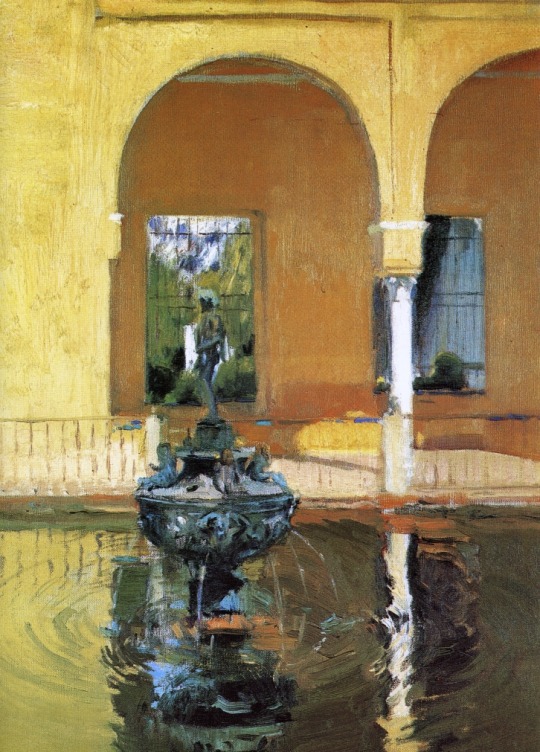


Joaquín Sorolla, series: Seville | The Alcázar at Seville, 1908 | Surtidor, 1899 | Fountain at the Alcázar in Seville, 1908 | The Fountain in the Alcázar of Seville, 1908 | Afternoon sun at the Alcázar of Seville, 1910 | Gardens of Alcazar, 1910 |
#Joaquín Sorolla#painting#oil painting#oil on canvas#art#20th century art#20th century#impressionism#cityscape#landscape#architecture#gardens#summer#spain#spanish art#art history
1K notes
·
View notes
Photo
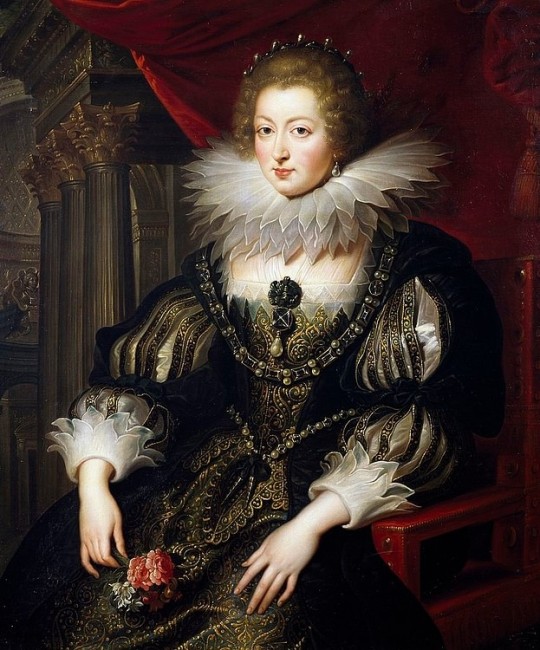
Anne of Austria
Anne of Austria (1601-1666), as the wife of King Louis XIII of France (r. 1610-1643), was queen consort of France and of Navarre when the Kingdom of Navarre was annexed by the French Crown. She also acted as regent for her son, King Louis XIV of France (1638-1715), during the early years of his reign.
Early Life
Anne was born in Valladolid, Spain, on 22 September 1601 to King Philip III of Spain (r. 1598-1621) and Margaret of Austria (l. 1584-1611). Her childhood was spent at the Royal Alcazar in Madrid, Spain. Growing up, Anne was constantly visiting monasteries and would soon follow in her parents' footsteps and become very religious. In 1611, Anne's mother died in childbirth, and so the responsibility of raising her younger siblings was passed down to Anne.
While a Spaniard, Anne had Austrian ancestry and was considered an Austrian Archduchess as well as a Princess of Spain and Portugal, which is why she is referred to as ‘of Austria'. Anne was described to be a very beautiful girl, even at a young age, with fair hair that could often be found in large curls, greenish-blue eyes, and an oval face. Her beauty and political position would help Anne gain the attention of many suitors.
The most successful of Anne's suitors was none other than King Louis XIII of France (l. 1601-1643), and when their betrothal was announced to the people of Paris on 18 March 1612, there were celebrations throughout the city. There were balls, banquets, and celebratory parties being hosted in the Louvre (the residence of French royalty), Fontainebleau Palace, and St. Germain. This was a political marriage, and Anne's father thought this would be a good chance to bring France into the Habsburg world; the couple married in 1615 when Anne was 14 years old.
As it would turn out, the union between Anne and Louis was very cold. Louis prioritized activities common for young men of high status, such as hunting rabbits in the garden of the Tuileries Palace, and would allow himself to fully listen and be governed by his favorite advisors in court; as such, he had almost no relationship with Anne.
Continue reading...
25 notes
·
View notes
Text


Auguste Léon. Seville, Spain In the gardens of the Alcazar, the Galleria del Grotesco (“of the Grotesques”) and the Fountain of Mercury in the center of the basin / Patio in the Alcazar Gardens, 1914.
39 notes
·
View notes
Text
@wisteriasymphonyy random photo, you say?
What if not random. What if Peafowl Family in the gardens of the Alcazar in Seville.

Tagging… @dragongutsixofficial, @rubytactician, @beezonia, @what-is-going-on-im-confused and @pegasusdrawnchariots!
20 notes
·
View notes
Photo
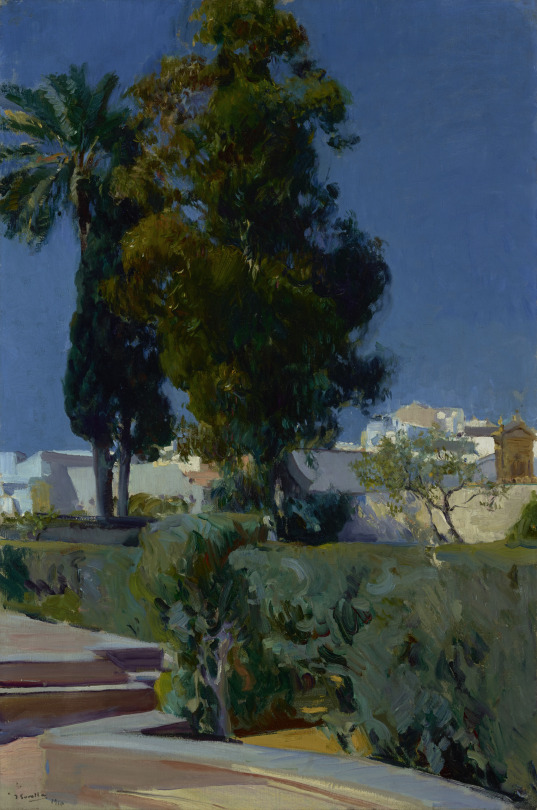
Corner of the Garden, Alcazar, Sevilla, Joaquín Sorolla y Bastida, 1910
Oil on canvas 95.3 x 63.5 cm (37 1/2 x 25 in.) J. Paul Getty Museum, Los Angeles, CA, USA
#art#painting#joaquin sorolla y bastida#joaquin sorolla#impressionism#1910s#20th century#sevilla#spain#seville#oil#the getty#spanish
123 notes
·
View notes
Photo

Joaquin Sorolla y Bastida (1863-1923 Spain)
Gardens in the Alcazar, Seville
99 notes
·
View notes
Text
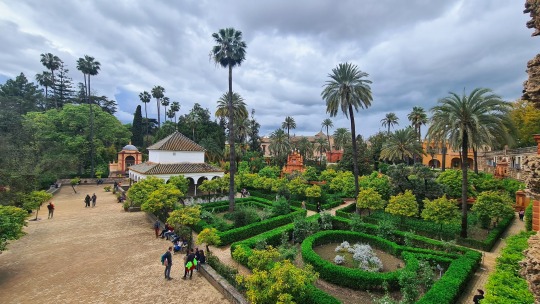
#phoneography#mobiele telefoon fotografie#mobile phone photography#smartphoneography#smartphone fotografie#smartphone photography#Sevilla#Spain#España#Eapagne#Spanien#Spanje#andalucia#andalucía#Andalusië#real alcazar#garden#tuin#garten#palace#palace garden#travel#reizen#reisen#voyage#viajar#travel photography#reisfotografie#Europe#Europa
4 notes
·
View notes
Text

Neptune
Painting of Neptune in gardens of Real Alcazar, Seville.
21 notes
·
View notes
Note
You are incredibly racist, GRRM himself has said that the closest equivalent of Dorne to the real world is the Moorish influences of Spain, and mentions PALESTINE and Wales as being two other influences. Literally his own words. Even in Game of Thrones, they filmed the Water Garden scenes in the Alcazar of Seville, a beautiful Moorish castle in Spain. That castle was literally built by Muslims and incorporates verses from the Quran and countless traditional Arabic and Islamic architectural elements. Fun fact: Alcázar comes from the Arabic word (al-qasr), meaning fort/castle/palace.
Dorne’s conquest by Nymeria parallels Spain’s conquest by the Moors. Nymeria Martell most obviously can be paralleled with Tariq Ibn Ziyyad, the Muslim Amazigh general hailing from Morocco that led the Muslim conquest of Spain on behalf of the Umayyad Caliphate, by crossing the Mediterranean sea and landing in Gibraltar. According to legend, Tariq Ibn Ziyyad burned his fleet before the Battle of Guadalete to prevent any of his troops from retreating back home. Who else burned their fleets to show commitment to their new conquest ? Nymeria Martell.
GRRM credits the “hot, dry” climate to being similar to that of Spain or Palestine’s, and that the mountains where the stony Dornishmen dwell being the equivalent to Wales. The Sandy Dornishmen are described to dwell in the deserts and along rivers, which is a descriptor that describes so many parts of West Asia (incorrectly called the “Middle East”) and North Africa. GRRM mentions Palestine, which has many streams and a very important river, the River of Jordan, as well as the Naqab region, a desert region of Palestine, therefore drawing parallels from the Sandy Dornishmen to the Palestinians is correct since Palestine is sandy, dusty, and dry. Finally, there’s a Stony Dornishmen, which GRRM equates to Wales.
*EDITED POST* (4/14/24)
I assume that this is the post you are responding to.
We must remember that the rules determining what racial group you are a part of is solely determined by the legal definitions of the created designations of "white", "mestizo", "Black", or whatever said society has created in their past and present. which is why when you travel, you sorta change race or have it "tweaked" to mean something else. In Westeros, there is not such legal, social, etc. concept of race that matches the modern U.S.A or any European definition. If you said Corlys was "Black", it would mean nothing to a Stark.
Race is also different from ethnicity or nationality: you can be Paelstinian Arab but or a Black American but be white passing enough to "become" white. You can be of East Asian descent and have monolids to be racialized as "Asian", but were born and partially raised in Germany (nationality) with the ethnicity of Uyghur.
Definitions of racism:
(Google) prejudice, discrimination, or antagonism by an individual, community, or institution against a person or people on the basis of their membership in a particular racial or ethnic group, typically one that is a minority or marginalized the belief that different races possess distinct characteristics, abilities, or qualities, especially so as to distinguish them as inferior or superior to one another (Merriam Webster) a belief that race is a fundamental determinant of human traits and capacities and that racial differences produce an inherent superiority of a particular race
This is from GRRM about "race" in ASoIaF and the Dornish:

Did GRRM ever actually say the words, "stony Dornish men are a completely different ethnic group from sandy or salty" or that "stony vs salty vs sandy Dornish people--apart from the nonDornish peoples' ways of categorizing them--are peoples with very different and maybe opposing customs the reflect in certain "laws" in Dorne"?
For the Martells and Dornishpeople to be PoCs exactly like the PoCs today in real life, there kinda has to be a history of a) the Dornish having been assimilated into Westerosi society/infrastructures and made subordinate to the "white" Westerosi b) actual systematic oppression against the Dornish from the nonDornish, and Dorne has been able to maintain its independence from Westeros pretty much since Westeros' inception. Even after Daeron II married Myriah Martell, the Martells and the Dornish still worked as their own principality rather than a region totally under the control of the Westerosi monarchy. There was no colonization or successful imperialist campaigns on Dorne. Like the Targs, Dorne is "queer" not for skin color nor religion so much as the Rhoynish traditions towards gender equity--at least regarding succession and leadership--and sexuality
I argued for how the Westerosi see the Dornish, which is not like how medieval EUs saw non-Christian Africans or Arabic-speaking Muslims. It is how Anglo Saxon Normans would have seen Spanish/Eu Mediterraneans. Watsonianly. This is a question of who are the people categorizing "race", and how is "race" categorized by those people.
There is tension b/t Stormlanders/Reachmen and the Dornish people (mostly Stony Dornishmen of the north) but it's hardly equivalent to what is known as "race". Not yet. Daeron I's categorization is a beginning, A PRECURSOR. With how Daeron II's subjects rebelled with a strong anti-Dornish sentiment (not enough misogyny [succession rules] & and a persistent sense of having court & office positions "taken" from the "local" nobles) the Otherness indicates a xenophobia but here is no concept of "white" or "PoC" anywhere.
I have also already addressed the whole stony vs salty vs sandy thing HERE and HERE. In both of those posts, I acknowledge that there are Islamic and Arabic inspirations for the creation of Dorne and I still recognize them there. And the Rhoynish (mot the Martells or any Dornish people) are definitely PoC. It's pretty obvious. But Dornish people--including the Martells--while descended from the Rhoynish and Rhoynisheness definitely determine how nonDornish perceive and identify Dornish people, are not racialized as today's PoCs are. They are closer to how Jewish, Spaniards, Mediterranean Europeans, and Southern European Europeans are racialized by Northwestern Europeans.
Those monikers Daeron I gave distinguished them based on appearance alone, hence the beginning of skin-color-race in terms of how much Rhoynish culture and blood mixed with the previous Andal-only people's, more of the Rhoynish cultural influence the more you go south and less when you go north. If you called a Wyl (example of a Dornish house of the north) anything something other than Dornish and just called them a "stony" Dornishman, I think they'd take offense.
Once again, when we see how the concept of race developed from religion to skin color, in Spain, you see that religion was the first way for medieval people to differentiate themselves into "races"--and when they used the word "race", they meant just "people from that region/religion/history", not necessarily people with such looks--more than skin color (though color was sometimes mentioned alongside, to identify, so as to say that this African was "safer").
Then there is the fact that there were intermarriages between Arabic-speaking, Muslims, Africans to be called "Moors" (a word from Christian Europeans of the pale variety, not those peoples) and with Catholic Spaniards. Today, Spain is considered a white European country even with its numerous ethnicities and history of conquest by the Umayyad Caliphate. Dorne, in autonomy and a unit of territory, is like both Wales and Spain. Today, European regions that are considered, racially, white.
Doylistically, while the narrative gets its inspiration from real life PoCs architecture and figures, the fact that Dorne, wherever you go even with the different levels of Rhoynish influence, is an amalgamation of Andal and Rhoynish that still has that Andal Seven/Catholic religion, and the Common tongue (Rhoynish is not spoken by most people in Dorne except the Green blood bc the Red Princes outlawed it) set up universally despite equal primogeniture and tolerance of homosexuality/extramarital sex means that those things that precede race-by-face/skin and then set up the basis for race-of-skin/face (religion, language, customs) does exactly not resemble what happened for the same as real life (again, Spain is not a PoC country in spite of the Umayyad conquest and influence).
Again, to me it felt like they are socially Othered how Jewish and Welsh, Scot, Irish, etc. people are Othered in Europe...not in modern times but in the context of various medieval English regions temporally and geographically. Again, Watsonianly. But there's strong argument for the other. While they are definitely Othered and have PoC inspiration and but they aren't Othered in their world like PoCs are Othered.
Either way, I don't think GRRM is conveying that Rhaegar left Elia specifically because he thought she was racially inferior to himself or wasn't owed respect due to her Dornishness. Which I already argued was untrue in the linked post above for the history that Tags and Martells have. And which was the point of me even bringing up race and Elia, since that was the argument Elia-supporters-Rhaegar-bashers have.
12 notes
·
View notes
Text

Previous / Realm of Slaanesh, Palace of Pleasure
Slaanesh the Resplendent, the Dark and Perfect Prince of Chaos, did not beg. He did not go scrapping or kneeling to anyone, not even his much more powerful Brothers in Darkness. It was others who kneeled to him, who debased themselves for even a second of his notice, a moment of his endless time.
But with Ïshtaran it was different. No words, but still a desperation, intermingled with anger. Stay. A plea and a command both, the Prince acting them out with acts both sensual and innocent. Days spent frolicking through the endless perfumed gardens, chasing one another over the sandy beaches. Nights spent in the Dark Prince's chambers, grabbing at each other, adding their voices to chorus of pleasure and terror echoing off the pristine walls.
Snares. All of them. Ïshtaran hadn't seen it before, when the world was new and untouched, but the Prince was a daemon of which he was familiar now. The heady musk of the palace fogged the edges of his mind and made his limbs heavy. It made his will soft, malleable...but it didn't break him. Didn't sway him from vows made before setting foot here in this hell dimension.
All was quiet, a rare lull in the pleasure games where indolence swept over all in the alcazar. The Prince lay on his body, chest to his own, drawing his sigil Ïshtaran's fur with one perfectly manicured talon. The Master of Seasons in turn petted the Dark Prince's glorious mane, combing his thick claws through the fine, flaxen strands. Ïshtaran steeled his nerves, squeezing shut his eyes, then casting a hard stare at the Prince.
"𝙸 𝚖𝚞𝚜𝚝 𝚐𝚘."
The Chimeric god's voice echoed off the chamber walls. He felt the gently writhing god atop him stop suddenly. The finger ceased and when he looked down, one lavender eye was clapped onto him in alarm. Anger. Much of Ïshtaran resolve's withered then.

"𝘉𝘶𝘵 𝘺𝘰𝘶'𝘷𝘦 𝘰𝘯𝘭𝘺 𝘫𝘶𝘴𝘵 𝘢𝘳𝘳𝘪𝘷𝘦𝘥. 𝘈𝘳𝘦 𝘺𝘰𝘶 𝘴𝘰 𝘦𝘢𝘨𝘦𝘳 𝘵𝘰 𝘢𝘣𝘢𝘯𝘥𝘰𝘯 𝘶𝘴 𝘢𝘨𝘢𝘪𝘯?"
"𝙾𝚏 𝚌𝚘𝚞𝚛𝚜𝚎 𝚗𝚘𝚝. 𝙱𝚞𝚝 𝙸 𝚑𝚊𝚟𝚎 𝚘𝚋𝚕𝚒𝚐𝚊𝚝𝚒𝚘𝚗𝚜. 𝙰 𝚢𝚘𝚞𝚗𝚐𝚕𝚒𝚗𝚐 𝚠𝚑𝚘 𝚗𝚎𝚎𝚍𝚜 𝚖𝚢 𝚐𝚞𝚒𝚍𝚊𝚗𝚌𝚎."
Slaanesh's face creased, incredulity joining his anger. He planted both of his fine hands into Ïshtaran's broad chest and pushed himself up, looking down at his paramour in displeasure. The Seasonal God could see serpentine fangs peeking out from his upper lip and felt the wounds about his neck and thighs hiss in dull pain from previous bites made.
"𝘠𝘰𝘶 𝘩𝘢𝘷𝘦 𝘴𝘪𝘳𝘦𝘥 𝘰𝘵𝘩𝘦𝘳𝘴 𝘪𝘯 𝘺𝘰𝘶𝘳 𝘢𝘣𝘴𝘦𝘯𝘤𝘦?"
"𝙽𝚘. 𝚈𝚘𝚞 𝚖𝚒𝚜𝚞𝚗𝚍𝚎𝚛𝚜𝚝𝚊𝚗𝚍." The Deity answered quickly with a shake of his head. "𝚃𝚑𝚎 𝙿𝚛𝚒𝚗𝚌𝚎 𝚘𝚏 𝙳𝚊𝚎𝚖𝚘𝚗𝚜. 𝚃𝚑𝚎 𝙳𝚒𝚜𝚌𝚊𝚛𝚍𝚎𝚍 𝚜𝚘𝚗 𝚘𝚏 𝙲𝚑𝚊𝚘𝚜."
Slaanesh thought. Then, he sunk down on his elbows, much -- but not all -- of his rage flagging.
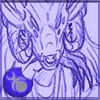
"𝘠𝘰𝘶 𝘴𝘱𝘦𝘢𝘬 𝘰𝘧 𝘵𝘩𝘦 𝘗𝘳𝘪𝘯𝘤𝘦 𝘰𝘧 𝘈𝘯𝘰𝘮𝘢𝘭𝘪𝘦𝘴. 𝘛𝘩𝘦 𝘛𝘳𝘢𝘪𝘵𝘰𝘳 𝘪𝘯 𝘉𝘭𝘢𝘤𝘬 𝘢𝘯𝘥 𝘞𝘩𝘪𝘵𝘦."
Ïshtaran nodded. "𝙸 𝚊𝚖 𝚊𝚕𝚕 𝚑𝚎 𝚑𝚊𝚜."
Slaanesh's snout came out of joint for a second. But the growing rage passed, tempered by his love for the deity beneath him. Charmed, even, by the pathetic predicament the Prince of Monochrome had found himself in. The Prince made a short, amused sound.
"𝘝𝘦𝘳𝘺 𝘸𝘦𝘭𝘭. 𝘛𝘩𝘦𝘯 𝘩𝘦 𝘴𝘩𝘢𝘭𝘭 𝘣𝘦 𝘰𝘶𝘳 𝘤𝘩𝘢𝘳𝘨𝘦, 𝘮𝘪𝘯𝘦 𝘢𝘴 𝘸𝘦𝘭𝘭 𝘢𝘴 𝘺𝘰𝘶𝘳𝘴. 𝘐 𝘸𝘰𝘶𝘭𝘥 𝘰𝘧𝘧𝘦𝘳 𝘩𝘪𝘮 𝘮𝘺 𝘭𝘰𝘷𝘦 𝘢𝘯𝘥 𝘮𝘺 𝘤𝘢𝘳𝘦𝘴𝘴 𝘪𝘧 𝘩𝘦 𝘸𝘰𝘶𝘭𝘥 𝘩𝘢𝘷𝘦 𝘪𝘵."
Ïshtaran doubted Hjallmarr would be interested in any such thing. Slaanesh pulled himself off of his paramour, donning and tying his robes. Though the Chimeras presence had been a welcomed relief from the Game's sudden ill-fortunes, he still had a war to win and punishments to dispense for his child's death. His gaze lingered on Ïshtaran as he sauntered off, stepping over the bodies of his children.

"𝘋𝘰, 𝘩𝘶𝘳𝘳𝘺 𝘣𝘢𝘤𝘬."
5 notes
·
View notes